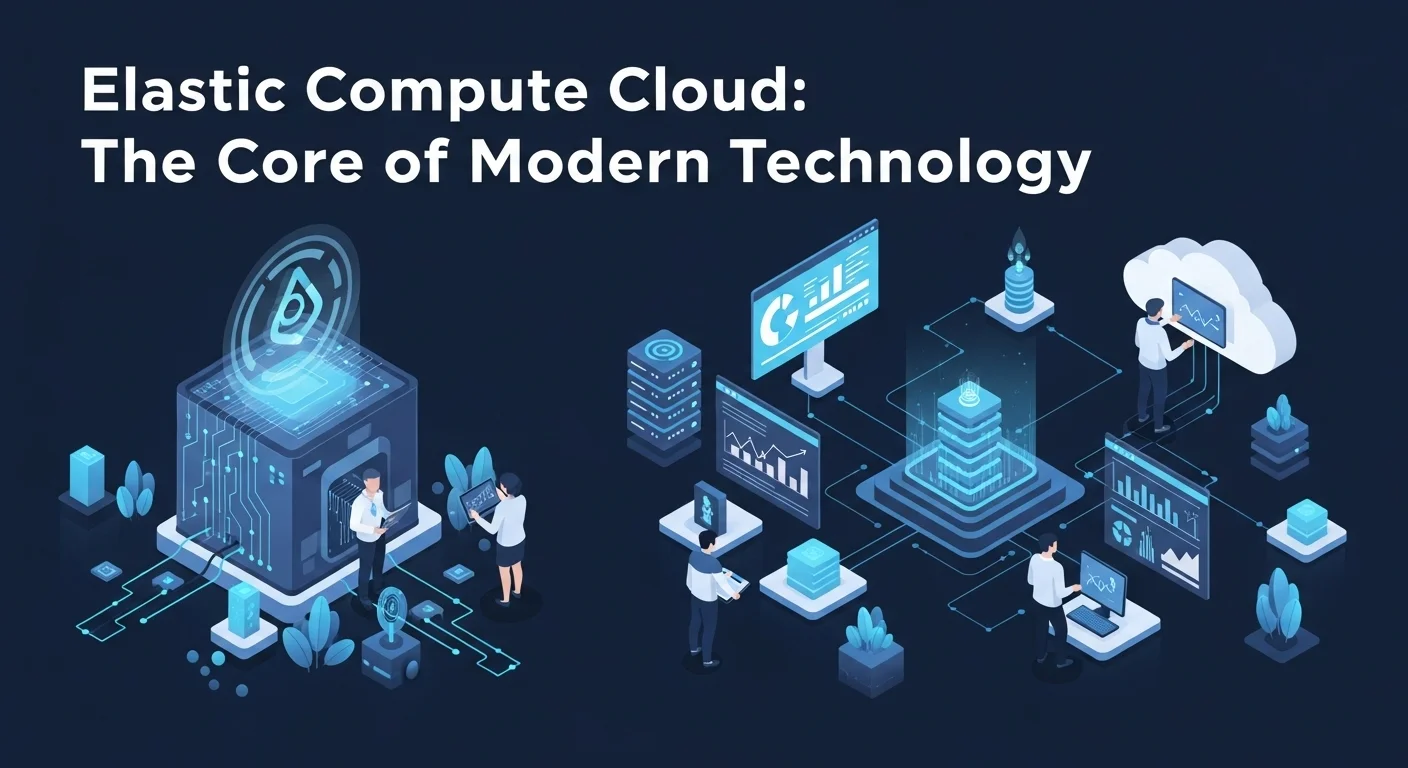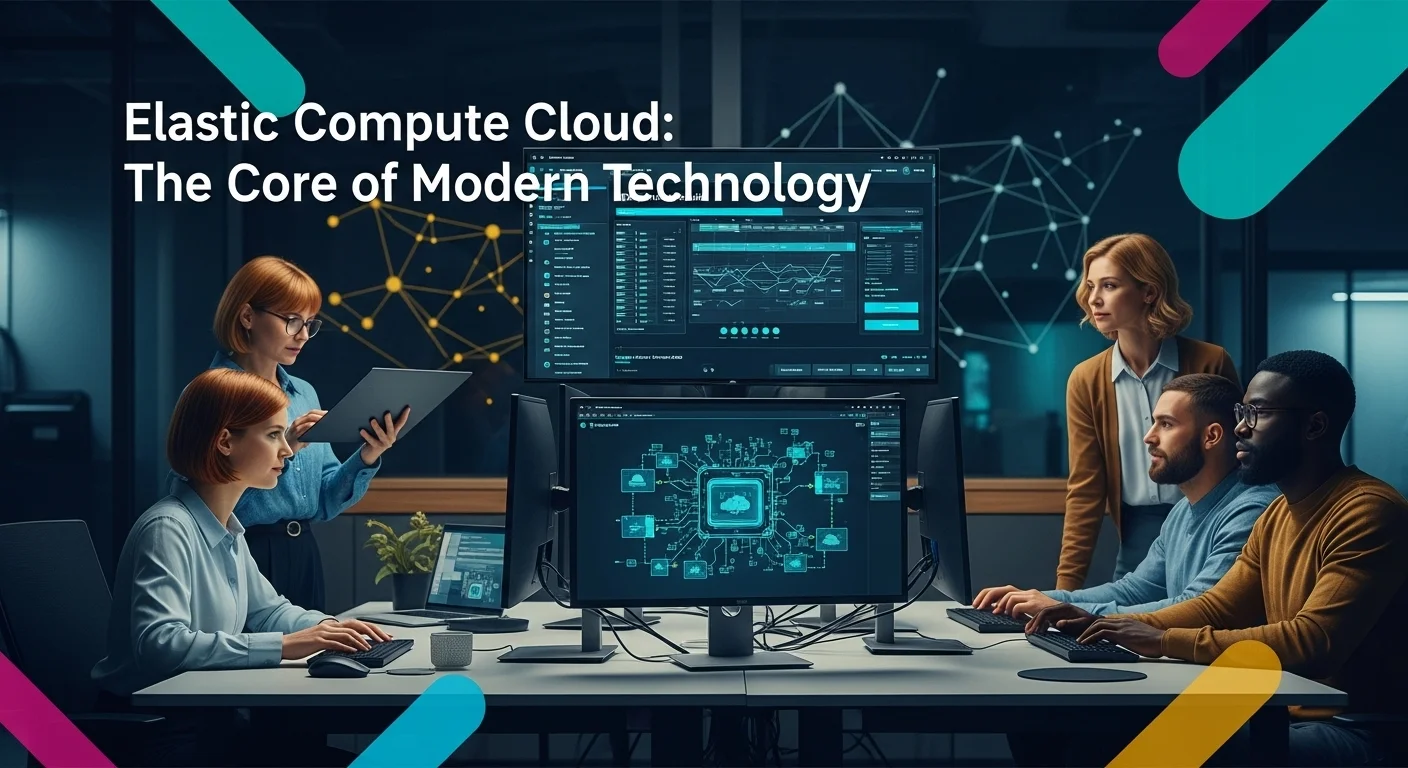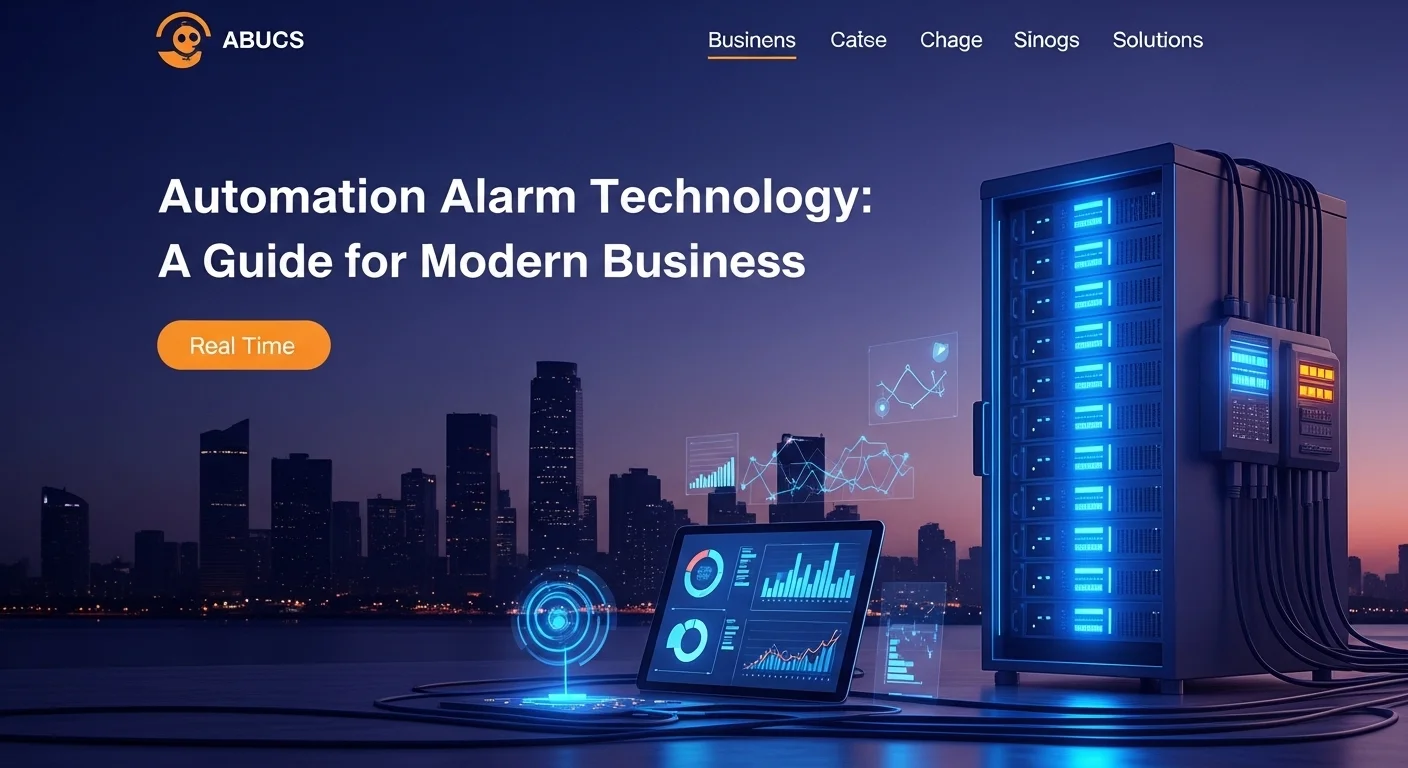EC2 Explained: A Practical Guide to Amazon's Elastic Compute Cloud

Executive Summary
Have you ever wondered how giants like Netflix can stream movies to millions of people at once, or how a small startup can suddenly handle a massive surge in users overnight? The secret, more often than not, is a foundational piece of technology called Amazon Elastic Compute Cloud, or EC2. It's the service that fundamentally changed the game by letting anyone rent powerful virtual servers on the internet. This article is your practical guide to understanding EC2. I'll walk you through what it is, why it matters, and how to use it effectively. We'll cover everything from the basic building blocks to advanced strategies for saving money and keeping your applications secure. My goal is to demystify the cloud and show you how EC2 provides the power and flexibility to build amazing things, whether you're a developer, an IT pro, or a business leader looking for a competitive edge.
Table of Contents
Table of Contents
- What is Elastic Compute Cloud (EC2) and Why Does It Matter?
- The Core Components of EC2
- Why EC2 is a Game-Changer for Business
- A Practical Walkthrough: Launching Your First EC2 Instance
- Smart Business Moves: EC2 Pricing Models Explained
- A Deep Dive into EC2 Security Best Practices
- Pro Tips for Advanced Cost Optimization
- Boosting Performance: Real-World Tips & Tricks
What is Elastic Compute Cloud (EC2) and Why Does It Matter?
Back in the day, if you wanted to launch an application, you had to buy physical servers. It was a slow, expensive process that involved a lot of guesswork. You'd buy more than you needed just to be safe, and much of that expensive hardware would sit idle. Then, in 2006, Amazon Web Services (AWS) launched EC2 and turned that entire model on its head. For the first time, we could 'rent' virtual computers, called instances, in the cloud. I remember when I first started using it; the ability to spin up a server in minutes felt like magic. This single service democratized computing power, giving startups the same firepower as massive corporations. At its heart, EC2 is the backbone of the modern internet, making it essential for anyone in technology to understand.
So, what does 'Elastic Compute Cloud' really mean? Let's break it down simply. 'Elastic' is its superpower. Imagine your website suddenly gets featured on the news. Traffic skyrockets. With EC2, you can automatically add more server instances to handle the load and then scale back down when things quiet down. You only pay for what you use, just like your electricity bill. This elasticity prevents your site from crashing and saves you a ton of money compared to owning physical hardware. 'Compute' is its job—it provides the processing power (CPU), memory, and storage your applications need to run. 'Cloud' simply means all this power is delivered to you over the internet from Amazon's global network of data centers. Because it's available to everyone, Amazon Elastic Compute Cloud is a public cloud service, offering incredible power and reliability that would be nearly impossible to build on your own.
The Core Components of EC2
To really get a handle on AWS Elastic Cloud Compute, you need to know its key building blocks. Think of them as the LEGO pieces you use to build your infrastructure.
- Amazon Machine Images (AMIs): An AMI is simply a blueprint for your server. It contains the operating system (like Linux or Windows) and any software you need pre-installed. You can use standard AMIs from AWS or create your own. In my experience, creating custom AMIs for your applications is a huge time-saver for deploying consistent environments quickly.
- Instance Types: AWS offers a zoo of instance types, each tailored for a specific job. There are general-purpose ones for web servers, compute-optimized ones for intensive calculations, and memory-optimized ones for large databases. Choosing the right one is crucial. A common mistake I see is using a massive, expensive instance when a smaller, cheaper one would do the job just fine.
- Elastic Block Store (EBS): An EC2 instance comes with temporary storage, but what if you need your data to stick around? That's where EBS comes in. Think of an EBS volume as a durable, virtual hard drive you can attach to your instance. Your data on an EBS volume is safe even if you stop or terminate the instance, making it perfect for databases and critical application data.
- Security Groups: This is your instance's personal firewall. A security group controls what traffic is allowed in and out. By default, it blocks everything, which is a great security starting point. You then open specific ports—for example, port 443 for web traffic. Getting security groups right is one of the most important skills for protecting your applications in the cloud.
- Elastic IP Addresses: A regular public IP on an instance can change if you stop and start it. An Elastic IP is a static IP address that you control. You can attach it to any instance, ensuring you have a consistent address for your website or application, which is vital for DNS records.
Why EC2 is a Game-Changer for Business
The technical flexibility of EC2 directly translates into huge business advantages. The speed at which you can innovate is staggering. I've worked with teams that can go from an idea to a working prototype deployed globally in a single afternoon—a task that used to take months. This agility is a massive competitive advantage. Thanks to AWS's global presence, you can deploy your applications close to your customers anywhere in the world, giving them a faster, better experience. You can also build incredibly resilient systems. By spreading your instances across different data centers (called Availability Zones), your application can survive a major outage without skipping a beat.
From a financial standpoint, the benefits are just as compelling. The biggest win is the move from buying expensive hardware (Capital Expenditure) to a pay-as-you-go model (Operational Expenditure). This lowers the barrier to entry and frees up cash for other parts of the business. The scalability means you never have to worry about your website crashing on Black Friday or during a major product launch—the system just expands to meet the demand. Ultimately, using a service like EC2 lets your tech team stop worrying about racking servers and managing data centers. Instead, they can focus on what they do best: building products that create real value for your customers. From simple blogs to complex data analytics and machine learning platforms, EC2 provides the solid foundation businesses need to thrive today.

A Practical Walkthrough: Launching Your First EC2 Instance
Jumping into Amazon EC2 is more than just clicking a 'launch' button; it’s your first step in architecting a cloud solution. Every choice you make impacts cost, security, and performance. Let's walk through the process, focusing on the details that really matter. This isn't just a technical checklist; it's a strategic guide to making smart decisions from the start.
- Start at the AWS Management Console: This web portal is your command center for all things AWS. Head over to the EC2 Dashboard to get a bird's-eye view of your virtual servers.
- Choose an Amazon Machine Image (AMI): This is your server's starting template. For beginners, Amazon Linux 2 is a great, optimized choice. But also think about the architecture—many modern workloads get better performance for less money on the ARM-based AWS Graviton processors. Don't forget to check the AWS Marketplace; it's full of pre-configured AMIs from third-party vendors.
- Select an Instance Type: This is a critical decision that directly impacts your monthly bill. My advice? Start small. It's easy to scale up later if you need more power. A common rookie mistake is overprovisioning, which is like buying a Ferrari to go grocery shopping. Use the AWS Compute Optimizer tool to get recommendations based on your actual needs.
- Configure Instance Details: Now we're getting into networking. You'll place your instance in a Virtual Private Cloud (VPC) to isolate it. A key step here is assigning an IAM Role. This lets your instance talk to other AWS services securely without you ever having to hardcode credentials. It's a non-negotiable security best practice.
- Add Storage: Your instance needs a root volume, which is an EBS volume. The default choice, General Purpose SSD (gp3), is fantastic for most use cases, offering a great balance of price and performance. You can also attach more EBS volumes if you need extra storage for your data.
- Add Tags: Don't skip this! Tagging is your best friend for organization and cost tracking. A simple tag like `Project:WebApp-Production` can save you hours of headaches later when you're trying to figure out which instances belong to which project.
- Configure Security Group: Time to set up your firewall rules. For a web server, you'll typically allow inbound traffic on port 80 (HTTP) and 443 (HTTPS) from the internet. But for administrative access like SSH, lock it down to *only* your IP address. Leaving it open is an invitation for trouble.
- Review and Launch: On the final screen, you'll create a key pair. This is a digital key you download to your computer. Guard this private key file with your life. If you lose it, you lose access to your instance. There's no 'forgot my password' button here.
This process shows that launching an instance is really an act of design. Every choice matters, which is why it pays to think through your application's needs before you start.
Smart Business Moves: EC2 Pricing Models Explained
One of the best ways to master EC2 is to understand its pricing. It's like choosing a phone plan; the right one can save you a fortune. Picking the wrong one can be a costly mistake.
- On-Demand: This is the pay-as-you-go plan. You pay by the second with no commitments. It's perfect for development, testing, or unpredictable workloads. It's the most expensive per hour, but its flexibility is priceless when you're just starting out.
- Savings Plans: This is for your steady, predictable workloads. You commit to a certain amount of usage (e.g., $10/hour) for 1 or 3 years and get a huge discount—up to 72%. It's incredibly flexible and automatically applies to different instance types, making it my go-to recommendation for cost savings.
- Reserved Instances (RIs): Similar to Savings Plans, RIs offer big discounts for a 1 or 3-year commitment. They are a bit less flexible as you commit to a specific instance family in a region, but they can be great for very stable applications.
- Spot Instances: This is the secret weapon for massive savings. You bid on unused AWS capacity and can get discounts of up to 90%. The catch? AWS can take the instance back with just a two-minute warning. It sounds risky, but for fault-tolerant jobs like data processing, batch jobs, or CI/CD pipelines, it's an amazing way to slash your costs.
When comparing EC2 to other services like AWS Lambda (serverless) or ECS/EKS (containers), it's about control vs. convenience. EC2 gives you full control over the virtual server. Services like Lambda handle all the server management for you but are best for short, event-driven tasks. The choice depends on how much heavy lifting you want to do yourself.
Available Resources and Business Solutions
EC2 truly shines when you combine it with other AWS services. Amazon CloudWatch, for instance, is your eyes and ears. It monitors metrics like CPU usage and lets you set alarms. I always configure an alarm to notify me if CPU utilization gets too high, which often signals a problem. Auto Scaling is what makes EC2 truly 'elastic.' You can set it up to automatically add or remove instances based on demand. Paired with an Elastic Load Balancer (ELB) to distribute traffic, this setup creates a self-healing, scalable application that can handle anything you throw at it. This is the gold standard for building modern web applications on AWS. Because Amazon Elastic Compute Cloud is a public cloud, there's also a vibrant ecosystem of third-party tools for security, cost management, and more, giving you the freedom to build the perfect solution for your business.

A Deep Dive into EC2 Security Best Practices
When you use the cloud, security is a shared job. AWS secures the data centers, but you are responsible for securing what you put inside them. Over the years, I've seen that getting these practices right from day one can save you from major headaches down the road. Here are my non-negotiable tips for hardening your Elastic Compute Cloud environment.
- Use IAM Roles, Not Access Keys: I can't stress this enough. Never, ever hardcode AWS access keys into your application code on an EC2 instance. It's a huge security risk. Instead, assign an IAM Role to the instance. This grants it temporary, automatically rotated credentials to access other AWS services. It's the single most important security change you can make.
- Master Your Firewalls: Use Security Groups as your primary firewall. Apply the principle of 'least privilege'—only open the specific ports your application needs to function. For admin access like SSH (Linux) or RDP (Windows), restrict it to your company's IP address or a secure bastion host. Leaving these ports open to the entire internet is like leaving your front door wide open.
- Encrypt Everything: Assume that bad actors might try to access your data. Protect it by encrypting it. Use Amazon EBS encryption to protect your data at rest (on your virtual hard drives). The performance impact is negligible, and it's a critical layer of defense. For data in transit, use TLS/SSL to protect information moving between your users and your application.
- Patch, Patch, Patch: You are responsible for keeping the operating system and software on your instances up to date. Use a tool like AWS Systems Manager Patch Manager to automate patching. It's a 'set it and forget it' way to protect yourself from known vulnerabilities.
- Monitor and Log Relentlessly: Turn on AWS CloudTrail to log all API calls in your account. It's an audit trail that shows you who did what, and when. It's invaluable for security investigations. Also, enable VPC Flow Logs to monitor network traffic for suspicious patterns. You can't protect against what you can't see.
Pro Tips for Advanced Cost Optimization
Cloud costs can spiral out of control if you're not paying attention. I've worked with companies that have saved millions by adopting these advanced strategies.
- Constantly Rightsize Your Instances: Rightsizing is the process of matching your instance to its workload perfectly. It’s not a one-time task; it's a continuous habit. Use the AWS Compute Optimizer, which uses machine learning to give you recommendations. Wasted spend from oversized instances is one of the biggest money drains in the cloud.
- Schedule Your Instances: Does your development server need to run on Saturday night? Probably not. Set up a schedule to automatically shut down non-production instances during off-hours. This simple trick can cut your dev/test environment costs by over 70%.
- Use a Portfolio of Pricing Models: The pros blend different pricing models. Cover your baseline, predictable usage with Savings Plans or Reserved Instances. Run fault-tolerant workloads on cheap Spot Instances. Then, use On-Demand for any unexpected traffic spikes. This portfolio approach maximizes savings across the board.
- Switch to AWS Graviton Processors: If your application is compatible (most Linux and open-source software is), moving to AWS's own ARM-based Graviton instances can give you up to 40% better price performance. It's one of the most powerful levers for reducing your EC2 bill.
- Be a Janitor: Regularly clean up your account. Hunt down and delete unattached EBS volumes and old snapshots that you no longer need. They still cost you money every month. Also, release any Elastic IPs that aren't attached to a running instance.
Boosting Performance: Real-World Tips & Tricks
Better performance leads to happier users and often lower costs, as efficient apps need fewer resources.
- Choose the Right Storage: Your application's speed is often tied to its storage. For most workloads, migrating EBS volumes from the older `gp2` to the newer `gp3` type can give you better performance at a lower cost. For extreme I/O needs, look at instance store volumes, which are blazing-fast temporary disks physically attached to the host server.
- Turn On Enhanced Networking: For network-heavy applications, choose instance types that support Enhanced Networking. It gives you significantly higher network performance and lower CPU usage, which can make a huge difference under heavy load.
- Use Infrastructure as Code (IaC): This is how modern teams manage the cloud. Use tools like AWS CloudFormation or Terraform to define your entire infrastructure in code. This makes your deployments repeatable, consistent, and less prone to human error. It's the professional way to manage EC2 at any scale.
From my own experience, I remember a project where a database was struggling. A simple switch from a `gp2` to a `gp3` EBS volume, allowing us to dial up the IOPS without paying for more disk space, solved the bottleneck instantly. These small, smart changes make all the difference. By adopting these strategies, you can transform EC2 from a simple server rental into a powerful, optimized platform that drives your business forward.
Expert Reviews & Testimonials
Sarah Johnson, Small Business Owner ⭐⭐⭐⭐
As a non-tech founder, this was really helpful! I finally get what EC2 is. I just wish there was a simple cost comparison chart to help me budget for the different pricing models.
Mike Chen, IT Manager ⭐⭐⭐⭐⭐
Fantastic article. The section on IAM roles versus access keys was a perfect explanation to share with my junior developers. The best practices are spot-on and reflect real-world needs.
Emma Davis, DevOps Engineer ⭐⭐⭐⭐⭐
Excellent guide! It connects all the dots between EC2, Auto Scaling, and ELB perfectly. I appreciated the pro-tips on cost optimization, especially the reminder about cleaning up unused EBS volumes. It's a common oversight!



